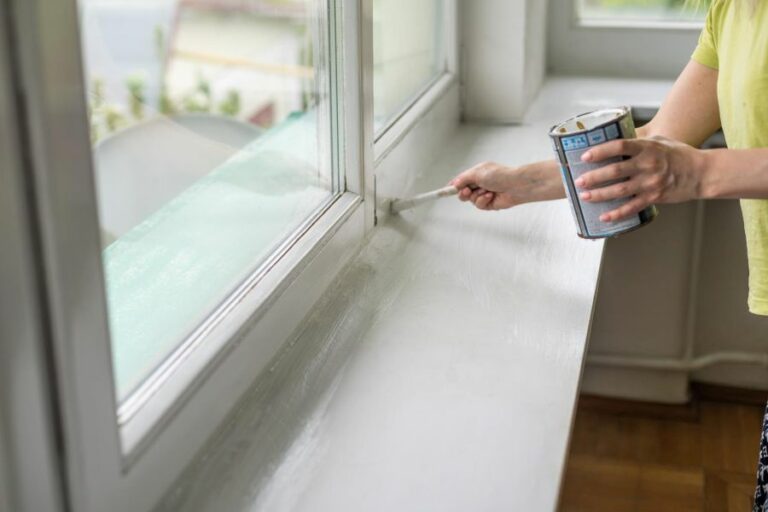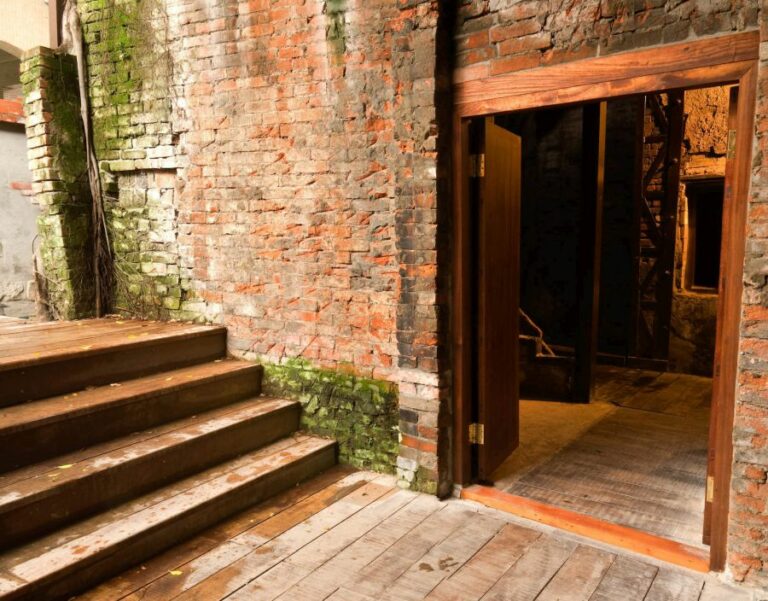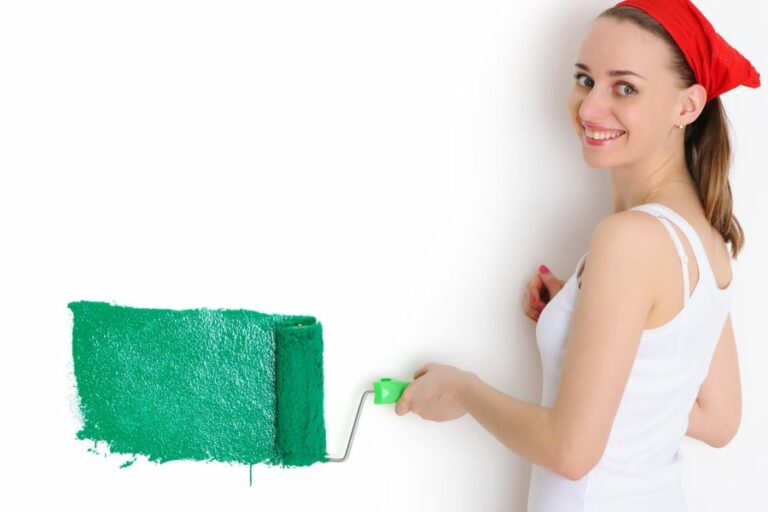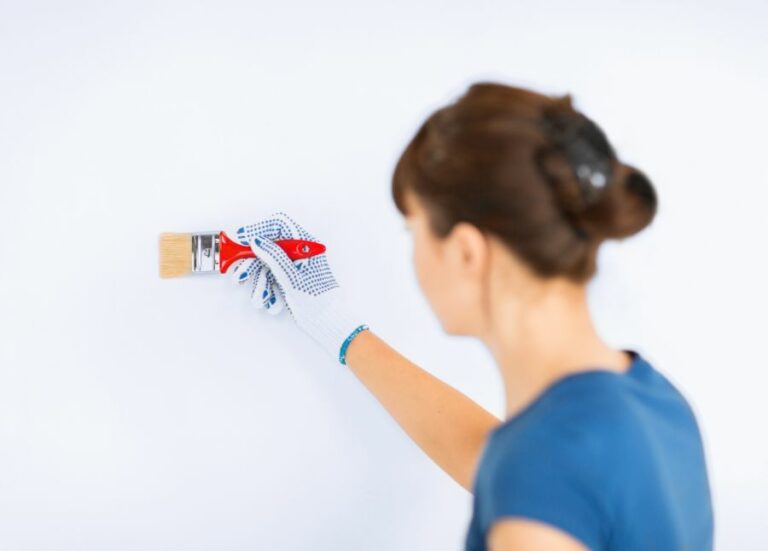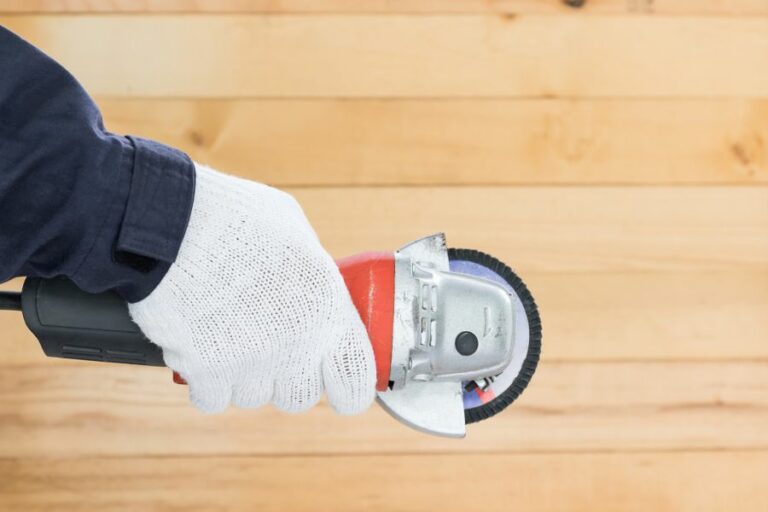How To Pick And Use Primers For Any Surface. What Pros Say
Are you tired of figuring out the right primer for different surfaces? Don’t worry. You’re not alone. Choosing and using the appropriate primer for any surface, whether it’s wood, metal, or concrete, can greatly impact the final outcome of your paint job.
How to pick and use primers for any surface:
To pick the right primer for a surface, consider the material type, environmental conditions, and desired finish. Common primers include oil-based, latex, shellac, and specialty primers. Prepare the surface by cleaning, sanding, and repairing the damage. Apply the primer using a brush, roller, or spray gun, and follow the manufacturer’s instructions for drying time, temperature, and paint compatibility.

Read on to discover expert tips for choosing the perfect primer for any surface and uncover the secrets to proper primer application. Don’t let preparation woes hinder your next project! Keep reading to unveil a flawless finish.
Contents
- 1 Selecting and Applying Primers for Various Surfaces
- 2 Is Primer Suitable for All Surfaces?
- 3 Choosing the Ideal Primer for Different Surfaces
- 4 Can Primers Adhere to All Surface Types?
- 5 Importance of Using the Right Primer
Selecting and Applying Primers for Various Surfaces
• Understanding Primers and Their Importance
Primers are essential for ensuring a smooth and long-lasting finish on various surfaces. They serve as a preparatory coating that creates a strong bond between the surface and the paint or other materials applied later.
Primers improve adhesion, prevent stains, and mask minor imperfections. To select the correct primer for a specific surface, consider factors such as the material, environmental conditions, and the desired finish.
– Types of Primers
Primers come in different forms, each designed to suit specific surfaces and requirements. Here are some common types of primers:
- Oil-based primers: Suitable for wood, metal, and some plastics, oil-based primers provide excellent adhesion and stain-blocking capabilities. They are compatible with both oil and latex paints.
- Latex (water-based) primers: Ideal for drywall, softwoods, and previously painted surfaces, latex primers offer quick drying time, easy cleanup, and low odor. However, they may not be as effective in blocking stains as oil-based primers.
- Shellac primers: Highly effective in blocking stains, shellac primers are often used on surfaces affected by water damage, smoke, or stubborn stains. They can adhere to nearly all surfaces but emit a strong odor and may require a more involved cleanup process involving denatured alcohol.
- Specialty primers: These are designed for specific applications, such as high-adhesive primers for glossy surfaces or masonry primers for porous surfaces like brick or concrete.
• Choosing the Right Primer: Factors to Consider
– Material of the Surface
Different materials require specific primer formulations to achieve the best adhesion and finish. Here’s a general guideline for selecting a primer for various surfaces:
- Wood: Oil-based or latex primers work well with wood, but oil-based is preferable for bare or stained wood to prevent tannin bleed.
- Drywall: Latex primers are recommended for new or unpainted drywall, as they are quick-drying and easy to sand.
- Metal: Oil-based or specialty metal primers are best for metal surfaces to prevent rust and ensure proper paint adhesion.
- Masonry: Use masonry-specific primers for brick, concrete, or stucco surfaces to provide a breathable barrier that prevents the paint from peeling or flaking.
– Environmental Conditions
The primer should be selected based on the environment in which the surface is exposed. For areas exposed to high moisture or fluctuating temperatures, use primers designed to withstand these conditions. In regions with high humidity, mold, and mildew-resistant primers are recommended.
– Desired Finish
The type of primer chosen can also affect the final appearance of the painted surface. A high-build primer might be necessary for a smooth and even finish, as it helps fill minor imperfections and provides a uniform base.
On the other hand, surfaces with specific colors or difficult stains may require a stain-blocking primer for an even and consistent appearance.
• Tips for Using Primers Effectively
– Surface Preparation
Proper surface preparation is crucial for achieving a durable and smooth finish. This includes cleaning, sanding, and repairing any damage on the surface. Clean surfaces thoroughly by removing dirt, grease, and debris. Sanding is necessary for smooth surfaces, as it improves the primer’s adhesion.
Repair any cracks or holes with appropriate filler materials and sand again for a smooth finish.
– Application Technique
Apply the primer using a brush, roller, or spray gun, depending on the surface and the size of the project. Follow the manufacturer’s instructions regarding the thickness of each coat, drying times, and recommended application techniques.
Choose high-quality brushes or rollers for a smooth and even application.
– Time and Temperature Considerations
Follow the manufacturer’s recommendations for drying time between the primer and paint application. It’s essential to allow the primer to dry completely before applying paint or other materials.
Also, be mindful of the temperature and humidity levels during the application, as they can affect the primer’s performance and drying time. Most primers and paints work best at temperatures between 50F and 90F and humidity levels below 85%.
– Compatibility with Paint
Ensure that the primer is compatible with the type of paint to be used. Oil-based primers work with both oil and latex paints, while latex primers are generally only compatible with latex paints.
In conclusion, selecting and applying the right primer for your surface is crucial for achieving a durable, smooth, and long-lasting finish.
By considering factors like the material, environmental conditions, and desired end results, homeowners and professionals alike can successfully prepare surfaces for painting, staining, or other treatments.
Surface | Primer to Use | Application Tips |
|---|---|---|
Wood | Oil-based or water-based primer | Ensure the surface is clean, dry, and lightly sanded before applying primer. |
Metal | Rust-inhibiting primer (oil-based or water-based) | Remove any rust and clean the surface before applying primer. Use a rust-inhibiting primer for the best results. |
Plastic | Adhesion-promoting primer (water-based) | Clean the surface with soap and water before applying primer. Use an adhesion-promoting primer to ensure good adhesion to the plastic. |
Concrete | Masonry primer (alkali-resistant, water-based) | Ensure the surface is clean, dry, and free of efflorescence before applying primer. Use a masonry primer to seal the surface and provide good adhesion for the topcoat. |
Glass | Glass-specific primer (water-based or bond-enhancing) | Clean the glass well and make sure it’s dry before applying primer. Use a glass-specific primer to ensure good adhesion for the topcoat. |
Brick | Masonry primer (alkali-resistant, water-based) | Ensure the surface is clean, dry, and free from efflorescence before applying primer. Use a masonry primer for best results. |
Is Primer Suitable for All Surfaces?
• The Importance of Primer
Primer is a crucial element in the painting process, as it helps in achieving a smooth and seamless finish. Applying primer on a surface before painting provides a base for the paint, which ensures better adhesion.
Primers are specifically formulated to address various challenges, such as sealing porous surfaces, blocking stains, and improving paint adhesion.
• Assessing the Surface
Before diving into whether primer can be used on any surface, it is important to assess the surface that needs to be painted. Consider factors such as its current state, its texture, and the type of material it is made from.
Knowing these aspects will help in selecting the appropriate primer and also the proper application technique.
– Porous and Uneven Surfaces
Porous and uneven surfaces, such as wood, drywall, and concrete, can be prone to absorb more paint. This, in turn, might lead to an uneven finish, as the paint does not adhere to these surfaces easily.
In such cases, using a primer can ensure better adhesion of the paint, preventing it from soaking into the surface.
– Stained and Glossy Surfaces
For surfaces that have been previously stained, smoke damage, or water damage, using a stain-blocking primer can help in concealing these imperfections.
Additionally, glossy surfaces like metal or previously-painted areas may require a primer to achieve an even finish, as paint might not adhere to the slick surface as effectively without a primer.
• Types of Primers
There are various types of primers available, and choosing the right one depends on the surface you are working on. Here are some common types to consider:
– Oil-Based Primer
Oil-based primers are versatile and can be used on a wide range of surfaces, including wood, metal, and masonry. This type of primer is particularly effective for surfaces that may require heavy stain-blocking or for sealing porous surfaces.
– Latex Primer
Latex primer is a popular choice for many interior and exterior surfaces, as it has fast-drying properties and low VOC emissions. This type of primer works well on porous surfaces, like drywall or concrete, making it suitable for both residential and commercial applications.
– Shellac Primer
Shellac primer is an excellent choice for spot-priming stained, scuffed, or damaged surfaces. It offers excellent adhesion, dries quickly, and can be used on various types of surfaces, such as wood, plaster, and metal.
– Bonding Primer
Bonding primers are designed to provide excellent adhesion on challenging surfaces, like glossy, slick, or hard-to-paint materials. This type of primer works well on materials like plastic, laminates, glass, and even tiles.
• Tips for Using Primer on Different Surfaces
Taking into account that primer can be applied on almost any surface, here are some recommendations to achieve the best results:
– Wood Surfaces
For bare wood surfaces, using an oil-based primer helps in sealing the porosity of the wood, ensuring a smooth finish. This also minimizes the chances of the paint soaking into the wood, leaving an uneven appearance.
– Metal Surfaces
When working on metal surfaces, opt for a rust-inhibiting primer to prevent rust formation. Ensure that the surface is clean, dry, and free of debris before applying the primer.
Oil-based and shellac primers are a good choice for most metals, but always check the primer’s label to ensure compatibility with the specific metal you are working on.
– Concrete and Masonry Surfaces
Before applying primer, concrete and masonry surfaces should be free of dirt, dust, and debris. A latex or acrylic primer works well on these surfaces, providing excellent adhesion and being suitable for interior and exterior applications.
• Conclusion
While primer can be used on almost any surface with the right preparation, choosing the appropriate type of primer for the specific material you are working on is essential.
By assessing the surface, selecting the right primer, and following proper application techniques, you can achieve a professional and long-lasting finish.
Choosing the Ideal Primer for Different Surfaces
A primer’s purpose is to help paint adhere to surfaces, ensuring that the final result is aesthetically pleasing and durable. This comprehensive guide will discuss various types of primers, suitable surfaces, and recommendations from personal experience.
• Water-Based Primers
Water-based primers, also known as latex primers, are highly versatile and suitable for a wide range of surfaces. They are a popular choice for their easy application and cleanup, low odor, and quick drying time.
– Recommended Surfaces
- Drywall: Water-based primers are ideal for new drywall, providing a smooth base for paint application.
- Wood: This primer works well on both bare and painted wood, effectively sealing the surface and reducing the chances of paint peeling.
- Masonry: These primers are suitable for masonry surfaces, such as brick and stucco.
– Personal Recommendation
I recommend the Benjamin Moore Fresh Start All Purpose Primer for water-based primer needs, as it provides excellent coverage and adhesion.
• Oil-Based Primers
Oil-based primers provide exceptional adhesion and stain-blocking capabilities. They work well on surfaces with heavy stains or when using oil-based paint.
– Recommended Surfaces
- Wood: Oil-based primers are great for sealing untreated wood, ensuring that the paint applied afterward lasts longer and looks better.
- Stained or Smoke-Damaged Surfaces: These primers effectively cover stains and prevent them from bleeding into the topcoat.
- High-Gloss Surfaces: Oil-based primers can help paint adhere to glossy surfaces that are difficult to paint over.
– Personal Recommendation
For oil-based primers, I recommend the Zinsser Cover Stain Primer, which offers superior stain-blocking capabilities and adherence to various surfaces.
• Shellac Primers
One of the most resilient primer options, shellac primers boast impressive adhesion and stain-blocking abilities, along with fast-drying times.
– Recommended Surfaces
- Severe Stains: Shellac primers excel in covering stubborn stains, such as smoke, water, and ink.
- Wood: These primers effectively seal knotty or sap-streaked wood, ensuring a smooth and uniform paint finish.
- Restoring Odor-Ridden Interiors: Shellac primers trap odors, making them ideal for surfaces in fire-damaged or musty interiors.
– Personal Recommendation
I recommend the Zinsser B-I-N Shellac-Based Primer, known for its excellent adhesion and stain-blocking abilities.
• Metal Primers
When working with metal surfaces, it’s important to use a primer specifically designed for metal.
– Recommended Surfaces
- Iron and Steel: Rust-inhibitive primers should be used to protect these surfaces from rust and corrosion.
- Galvanized Metal: To ensure proper paint adherence, use a primer designed to bond with galvanized surfaces.
- Aluminum: A primer specifically formulated for aluminum surfaces will provide the best adhesion.
– Personal Recommendation
I recommend the Rust-Oleum Professional High-Performance Metal Primer as it offers excellent rust protection and adherence to various metal surfaces.
• Concrete and Masonry Primers
Concrete and masonry surfaces require primers designed to help paint adhere to their unique texture.
– Recommended Surfaces
- Concrete: Use a primer formulated to bond with the porous surface of concrete, ensuring proper adhesion.
- Masonry: Choose a primer designed to adhere to brick, stucco, and other masonry surfaces.
– Personal Recommendation
My preferred choice for concrete and masonry primers is Lanco White-Seal Plus, as it provides excellent surface bonding and durable coverage.
• Conclusion
Selecting the proper primer for your surface is crucial for achieving a professional and long-lasting result. Utilize this comprehensive guide and its recommendations to make an informed decision for your next painting project.
Surface Type | Primer Type |
|---|---|
Wood | Oil-based or latex primer |
Metal | Rust-inhibiting primer |
Concrete | Concrete primer or masonry primer |
Plaster | Oil-based or latex primer |
Brick | Masonry primer |
Fiber Cement Board | Alkali-resistant primer |
Drywall | PVA (polyvinyl acetate) primer |
Previously Painted Surfaces | Latex or oil-based primer (depending on existing paint) |
Can Primers Adhere to All Surface Types?
A primer is a valuable tool in the world of painting, decorating, and home repairs. Its primary function is to serve as a base coat, preparing surfaces for the application of paint, wallpaper, or other coverings.
But does primer bond to any surface effectively? Let’s discuss the various types of surfaces and the primer’s compatibility with them.
• Primer for Porous Surfaces
Porous surfaces like drywall, wood, and concrete require a primer that excels in sealing and bridging these materials. By doing so, it helps the subsequent layers of paint or other coverings to adhere evenly and smoothly.
For drywall and other types of porous surfaces, professionals usually recommend using a PVA (polyvinyl acetate) primer. PVA primer is specifically designed for porous surfaces, sealing them and providing a proper base for paint adhesion.
• Primer for Non-Porous Surfaces
Non-porous surfaces like glass, metal, and plastic often pose a significant challenge when it comes to priming, as their smooth surfaces can cause adhesion issues. However, primers are available that are designed for use on these surfaces.
For metal surfaces, a metal primer, typically oil-based or acrylic latex, is recommended. These primers contain rust-inhibiting properties, which protect the metal from corrosion while providing a surface for the paint to adhere to.
When dealing with plastic surfaces, a plastic primer should be used. These primers are specifically formulated to bond with plastic materials, ensuring the paint will adhere properly to the surface.
• Primer for Glossy Surfaces
Glossy surfaces like high-gloss paint, tile, or varnished wood tend to repel most primers due to their slick nature. In these cases, it’s necessary to use a bonding primer.
Bonding primers are specifically designed to create a strong bond between the glossy surface and the subsequent paint or covering, ensuring proper adhesion and a long-lasting finish.
Alternatively, you can lightly sand the glossy surface before priming, which will create a better surface for the primer to bond. Regardless of whether you sand or not, always ensure the surface is clean and free from dust, dirt, and grease before applying primer.
• Primer for Stained or Odorous Surfaces
Stained, odorous, or smoke-damaged surfaces can be challenging for primers to cover effectively. In these situations, a stain-blocking primer is necessary.
These primers are designed to prevent stains and odors from seeping through the paint or covering, ensuring long-lasting coverage and a fresh appearance.
• Tips for Successful Application
Regardless of the type of surface, the successful primer application comes down to choosing the right product and following the appropriate best practices:
- Choose the right primer: As discussed above, always ensure you are using a primer that is specifically designed for the surface you are working on.
- Clean the surface: Before applying the primer, ensure the surface is clean and free from dust, dirt, grease, and any loose or peeling old paint or coverings.
- Apply the correct amount of primer: Follow the manufacturer’s instructions for how much primer to apply, as too much or too little can impact the overall effectiveness.
- Allow adequate drying time: Give the primer ample time to dry before applying paint or any other covering. Most primers typically recommend waiting at least 24 hours for optimal bonding.
- Test your work: Once the primer has dried, test the surface by gently rubbing your fingernail against it. If the primer easily scratches off, it may not have bonded properly, and further surface preparation may be necessary.
• In Conclusion
While primer can bond to a wide range of surfaces, it’s essential to remember that different surfaces require specific types of primer for optimal results.
By choosing the right primer and following proper application techniques, you can ensure a successful outcome for your painting, decorating, or home repair project.
Importance of Using the Right Primer
When it comes to painting, many may wonder whether the type of primer used makes a significant difference in the final outcome. The short answer is: yes, it does matter.
• The Importance of Using the Right Primer
Priming is a crucial step in painting, as it prepares the surface for the application of paint. The use of the appropriate primer can enhance the performance and overall appearance of the project. There are several benefits to this, such as:
- Better paint adhesion: Primers allow the paint to adhere more effectively to the surface, which can lead to fewer touch-ups and longer-lasting results.
- Optimal color representation: Primers can increase the opacity of the paint, ensuring that the desired color appears as true and vibrant as possible.
- Enhanced durability: Priming a surface can significantly improve the durability and longevity of the paint, safeguarding it against issues like peeling and blistering.
- Surface uniformity: Primers help even out the surface, ensuring a uniform base for the paint to be applied upon.
• Types of Primers and Their Applications
There are several categories of primers, with each one being formulated for specific surfaces and environments. Understanding these types will help you make an informed decision when selecting a primer for your project.
– Oil-Based Primers
Oil-based primers have been popular for many years, known for their reliability and consistent performance. These primers are suitable for several surfaces, including:
- Wood: Oil-based primers penetrate the wood’s surface, providing a strong bond and excellent protection from moisture.
- Metal: They offer strong adhesion and corrosion resistance for metal surfaces, making them ideal for iron, steel, and other metals prone to rust.
- Masonry: Oil-based primers are well-suited for porous surfaces like concrete, brick, and stucco, promoting better adhesion and reducing the amount of paint absorbed by the surface.
However, oil-based primers have longer drying times, emit strong odors, and require cleanup with mineral spirits or paint thinner, which can be less convenient for some users.
– Latex (Water-Based) Primers
Latex primers have become increasingly popular due to their quick drying time, low odor, and easy soap-and-water cleanup. These primers are perfect for:
- Drywall: Latex primers offer smooth, even coverage on drywall surfaces, making them an excellent choice for this application.
- Softwoods: It provides a consistent base for the paint to adhere to, reducing issues like blotchiness and uneven absorption.
- Galvanized metals: Latex primers do not react with the zinc coating on galvanized metal surfaces, preventing corrosion and maintaining the integrity of the metal.
– Shellac-Based Primers
Shellac-based primers have been utilized for centuries, known for their ability to seal in stains and cover odors. They are ideal for:
- Stain-blocking: Shellac primers effectively seal out stains, including water damage, tannins in the wood, and smoke damage, ensuring a clean and uniform surface for painting.
- Odor-blocking: They are excellent at trapping offensive odors, making them ideal for use in areas where smells need to be contained.
- Restoration projects: Shellac primers work well on surfaces affected by fire or water damage, creating a barrier that prevents the damage from resurfacing.
While shellac-based primers offer unparalleled stain-blocking capabilities, they may have a strong odor and require cleanup with denatured alcohol, which can be unpleasant for some.
• How to Choose the Right Primer
To select the appropriate primer for your project, consider the following factors:
- Surface type: Determine the type of surface you will be painting (wood, metal, masonry, drywall), and choose a primer that’s specifically formulated for that material.
- Stain- and odor-blocking needs: If your project involves covering stains or sealing odors, opt for a shellac-based primer that’s designed for this purpose.
- Environmental factors: If you’re painting in a humid area, consider using a primer with mold and mildew resistance to prevent growth.
- Environmental regulations: Some oil-based products may not be available or have restricted use due to environmental regulations in certain areas, so check local guidelines before making your choice.
In conclusion, selecting the right primer for your specific project is paramount to achieving optimal results, which include vibrant colors, a smooth finish, and long-lasting durability.
Taking into account the surface type and the particular challenges involved, such as stain and odor blocking, can significantly increase the chances of a successful painting project.


